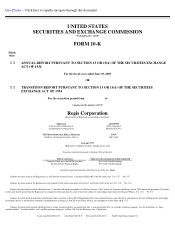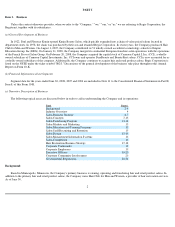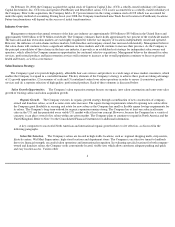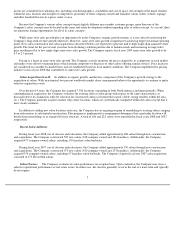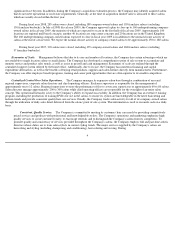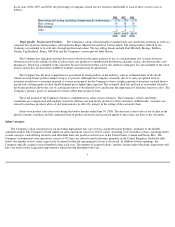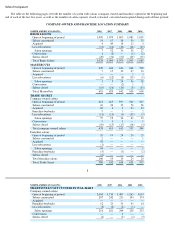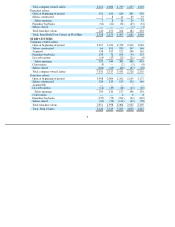Supercuts 2008 Annual Report Download - page 8
Download and view the complete annual report
Please find page 8 of the 2008 Supercuts annual report below. You can navigate through the pages in the report by either clicking on the pages listed below, or by using the keyword search tool below to find specific information within the annual report.
significant lease buyouts. In addition, during the Company's acquisition evaluation process, the Company may identify acquired salons
that do not meet operational or real estate requirements. Generally, at the time of acquisition limited value is allocated to these salons,
which are usually closed within the first year.
During fiscal year 2008, 285 salons were closed, including 180 company-owned salons and 105 franchise salons (excluding
150 franchise buybacks). In July of 2008 (fiscal year 2009), the Company approved a plan to close up to 160 underperforming company-
owned salons in fiscal year 2009, the majority of which are expected to occur in the first half of fiscal year 2009. Approximately 100
locations are regional mall based concepts, another 40 locations are strip center concepts and 20 locations are in the United Kingdom.
The 160 underperforming company-owned salons expected to close in fiscal year 2009 is in addition to the normal closure activity of
salons at the end of a lease term. We expect the normal closure activity of company-
owned salons to be approximately 150 to 180 salons.
During fiscal year 2007, 303 salons were closed, including 135 company-owned salons and 168 franchise salons (excluding
97 franchise buybacks).
Economies of Scale. Management believes that due to its size and number of locations, the Company has certain advantages which are
not available to single location salons or small chains. The Company has developed a comprehensive point of sale system to accumulate and
monitor service and product sales trends, as well as assist in payroll and cash management. Economies of scale are realized through the
centralized support system offered by the home office. Additionally, due to its size, the Company has numerous financing and capital
expenditure alternatives, as well as the benefits of buying retail products, supplies and salon fixtures directly from manufacturers. Furthermore,
the Company can offer employee benefit programs, training and career path opportunities that are often superior to its smaller competitors.
Centralized Control Over Salon Operations. The Company manages its expansive salon base through a combination of area and
regional supervisors, corporate salon directors and chief operating officers. Each area supervisor is responsible for the management of
approximately ten to 12 salons. Regional supervisors oversee the performance of five to seven area supervisors or approximately 60 to 80 salons.
Salon directors manage approximately 200 to 300 salons while chief operating officers are responsible for the oversight of an entire salon
concept. This operational hierarchy is key to the Company's ability to expand successfully. In addition, the Company has an extensive training
program, including the production of training DVDs for use in the salons, to ensure its stylists are knowledgeable in the latest haircutting and
fashion trends and provide consistent quality hair care services. Finally, the Company tracks salon activity for all of its company-owned salons
through the utilization of daily sales detail delivered from the salons' point of sale system. This information is used to reconcile cash on a daily
basis.
Consistent, Quality Service. The Company is committed to meeting its customers' hair care needs by providing competitively
priced services and products with professional and knowledgeable stylists. The Company's operations and marketing emphasize high
quality services to create customer loyalty, to encourage referrals and to distinguish the Company's salons from its competitors. To
promote quality and consistency of services provided throughout the Company's salons, the Company employs full and part-time artistic
directors whose duties are to train salon stylists in current styling trends. The major services supplied by the Company's salons are
haircutting and styling (including shampooing and conditioning), hair coloring and waving. During
6


